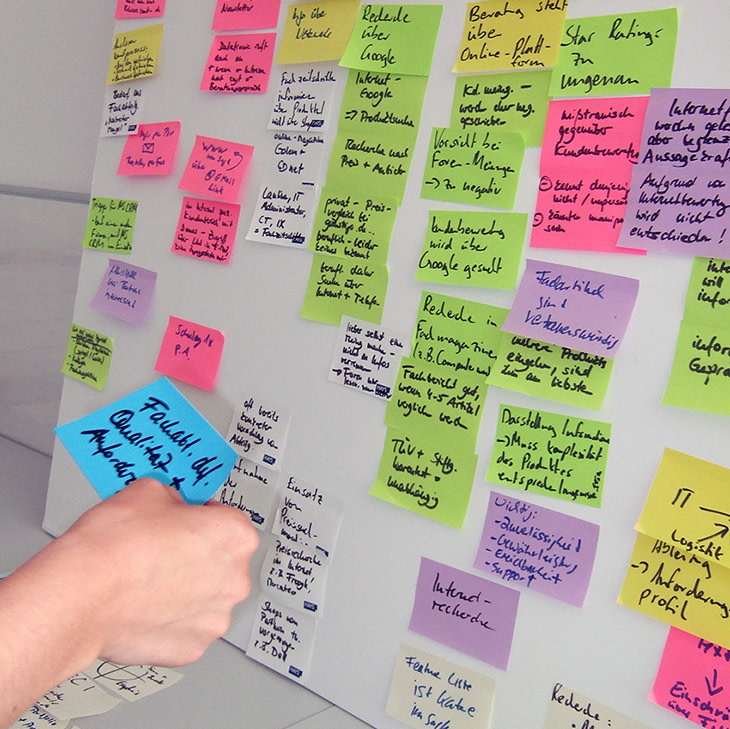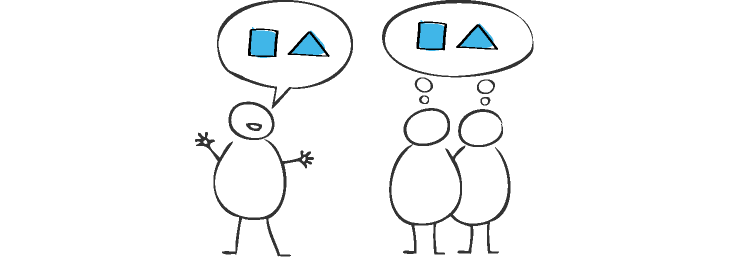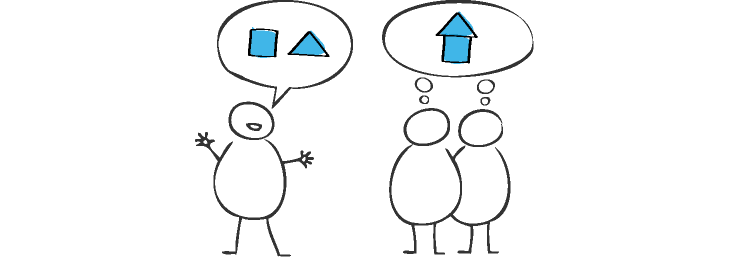STORYTELLING: UTILIZING STORIES

Good stories and narratives are much more than just stories, as they educate us, equip us with knowledge and allow us to understand how certain actions and decisions came about. So, when stories are able to explain contexts to us in an entertaining way, how can they be used in user research for that very purpose?
At first glance, the combination of targeted research and casual storytelling doesn’t seem to work very well. Although there are methodological approaches that use comprehensive narratives as their basis (e.g. narrative interviews in biographical research), the advantages of such a procedure in the context of user research remain nebulous at first. At second glance however, storytelling reveals enormous potential: storytelling is used – not only at D-LABS– to comprehensively inform all project participants and to stimulate creative thinking. Narratives and the method of storytelling seems to be increasingly in vogue in qualitative research, too. But first things first.
STORYTELLING AS AN ELEMENT OF KNOWLEDGE TRANSFER
When one thinks of stories, mostly informal situations come to mind in which we tell stories or listen to them: In a family situation, among friends, or even during lunch breaks with colleagues. Someone always has something to tell. The best stories remain in our memories and we pass them on to each other because they are particularly interesting, funny or even tragic. And that’s exactly where the potential of stories becomes evident, the potential that makes stories useful for the formal context, i.e. for project-related work: We think about them and they remain in our memories for a long time.
WHY SOMETIMES IT IS BETTER TO TELL THINGS AGAIN
Everyone knows it: There are presentations that you really have to sit through. Numbers, facts and abbreviations are thrown around, which escalates the information content, but it is not absorbed by the audience. As it was once stated in school, “Make your presentations vivid, use pictures!” - We use stories.
Used skillfully, stories can serve to explain complex content and relationships in an understandable and vivid way using specific examples. In some cultures, stories have been passed down from generation to generation without being written down and without loss of information or knowledge. We can do the same. The whole world likes stories. Everyone is a potential storyteller. Stories allow us to sort the complexity of the world, to survey apparent disorder and to uncover true connections. Overall, the absorption of knowledge is improved by storytelling and its vivid presentation. A story offers a meaning by providing already structured knowledge which will be remembered for a long time (if you want to win at “I’m packing my suitcase”, I recommend making a story out of the sequence of objects).

THE PROTAGONIST IS THE USER
Even supposedly deadlocked discussions about seemingly unsolvable problems can be loosened up through targeted storytelling and the awareness of new solution approaches can be sharpened. Stories are built around protagonists. Products should be developed for users. In storytelling, initially abstract-looking problems are given a human face, which simplifies the problem-solving enormously. And through storytelling the focus remains precisely on the person who is often forgotten during the process, but for whom all the effort is made in the end: The user.
COMMUNICATION WITH ADDED VALUE
And that’s not all: Stories animate the listener to reflect on comparable experiences and develop their own ideas. The audience is animated to listen actively and at the same time guided to find creative solution approaches based on the specific example presented in the story. Thus, storytelling promotes general mental involvement and enables a new quality of communication.

Consequently, communication is not a one-way street from the sender of a message to its recipient. At best it is a process which opens a social and communicative space for a fruitful exchange process, which all employees are involved in. It is precisely this objective that makes storytelling so interesting for project work and why it is an integral part of our project work at D-LABS. By communicating project-relevant knowledge through storytelling, interdependencies are vividly explained to all those involved in the project. This stimulates collaborative creative and goal-oriented thinking and prevents one-sided and subjective solutions.
ALL’S WELL THAT ENDS WELL?
Just as this blog entry comes to a (hopefully) good end, storytelling can contribute to a good project completion if used at the right process step. Storytelling is used to communicate relevant knowledge in a clear way and to involve all project participants in the process. This is an essential requirement for innovative and creative project settings, in which the best solution is developed from a multitude of ideas. And precisely this solution is synonymous with a happy ending!
For all those who can’t get enough of storytelling:
Method Storytelling

Contact
14482 Potsdam
potsdam@d-labs.com
10245 Berlin
berlin@d-labs.com
70173 Stuttgart
stuttgart@d-labs.com
